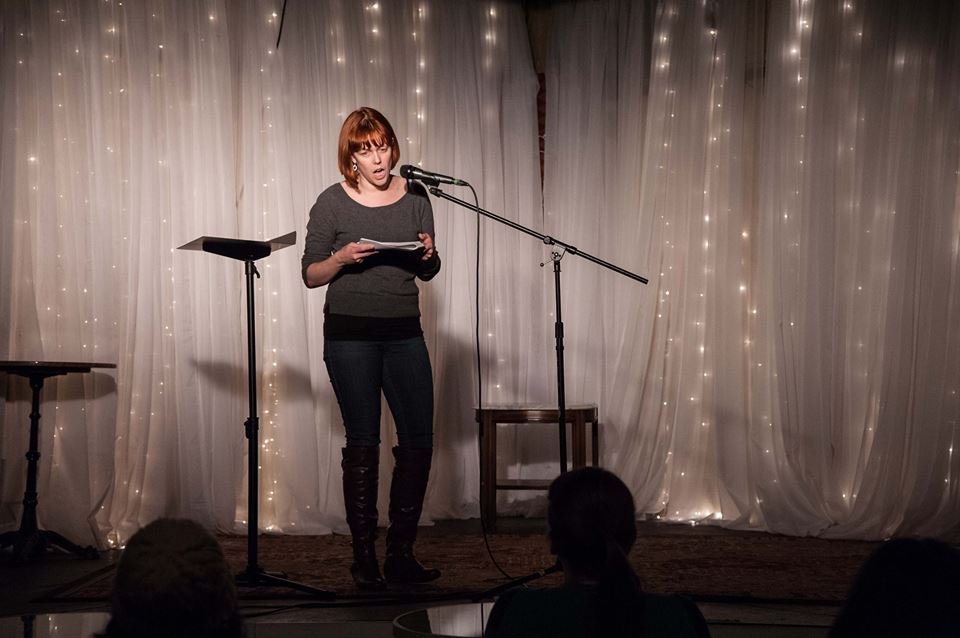Presented at the Critical Juncture 2017: The Role of Art at the Art@Work Program by Alexandra C. Pauley. Originally presented at a 2016 Bleux Stockings Society safe space show in Atlanta for the theme, “Beauty.”
Warning: Graphic Images Below
I have always been beautiful.
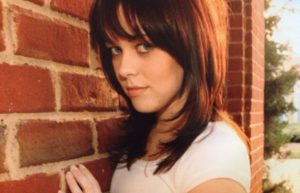
Growing up, I was thin even though I ate like a racehorse. I managed to get out of braces before high school. I played the lead in many school and community plays and was a soloist in chorus. I was a cheerleader, a dancer… Do you hate me yet?
Of course, I never saw myself that way—and not many others did either. My high school beauty pageant dismissed me in the first round, and I distinctly remember having to ask someone to explain the name a boy called me in eighth grade: butterface (as in “but her face…”) But I was beautiful.
On May 13, 2008, all that changed. I went to the emergency room after throwing up every 20 minutes for 11 hours. I remember walking in and over to the nurses’ station.
“Name,” the woman demanded without looking up from her monitor.
“Alexandra Pauley.” I croaked.
“Social security number?”
I rattled it off. She looked up. My eyes were snaked with tiny red veins, thick and irritated, that covered most of the white. My lips had swollen to nearly three times their normal size from the blisters that started on my tongue and rippled outward. Her entire demeanor flipped in an instant. Where once the forty-something pink-faced woman in green scrubs had been robotic—bored, even—she was now alert. And pale.
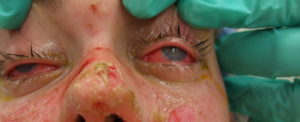
“There’s a wheelchair right here around the corner. Come sit down, and we’ll get you in a room.”
Minutes later I was in a bed, and the paperwork was being rushed through to admit me to the hospital. I was unaware at the time, but I would be in the intensive care burn unit with my own dedicated nurse for the next 32 days. In the next 24 hours, I would learn I was allergic to one of the prescriptions I had just begun: an anti-rheumatic called Arava. I had been dealing with severe symptoms of rheumatoid arthritis for over six months, with little reprieve. My young doctor had painfully drained my knees of fluid and prescribed the Arava. I had thought the draining procedure was excruciating, but nothing could have prepared me for the brutal month ahead.
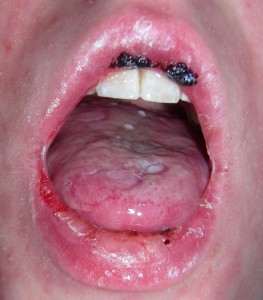
The allergic reaction was called Stevens-Johnson Syndrome, although the severity of my case was classified as toxic epidermal necrolysis. SJS and kills off cells that hold the epidermis to the dermis. Within 7 days of being affected, 85 percent of my epidermis blistered and sloughed off. SJS also creates blisters and ulcers in your mucous membranes. All of them. To this day, I swear I cannot hear the word catheter without my vagina seizing up in fear.
I wish I could say that SJS was the most hellish thing I’ve ever experienced. And it was hell—burning from the inside out, shivering with 102 degree fevers, blood drawn every few hours till they had to give me a transfusion, bed ulcers on my feet, can’t open my eyes hell. But that wasn’t the worst of it. When I finally came off the morphine and started being able to walk around a bit, I saw myself in the mirror for the first time.
That face was not my face.
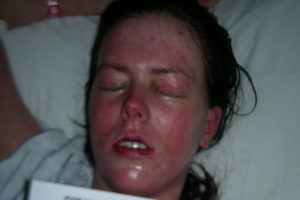
I had just dyed my hair black for a role I was supposed to play in June—so much for that. The dark, tangled mess that framed my face made my bloodshot eyes all the more obvious. My sickly pale skin was splotched and streaked with pinks and reds where the new skin was healing. I’d lost nearly 30 lbs. on an already trim frame, so my cheekbones jutted out and purple pooled under my sunken eyes. My lips were caked in black scabs from where they had split and bled every time I’d screamed in pain.
That face was not—could not be—my face. But it was.
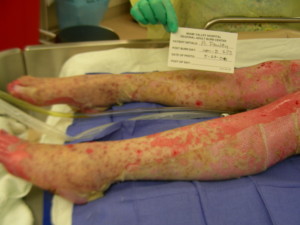
In the ensuing years, I did my best to rebel against the tightening grip of my health problems. I smoked to relax and to feel like I could belong somewhere again. I drank to forget the faces of children who cried at the sight of me, and to convince myself that I was someone worth spending time with. I shamefully flirted and made myself too available to glean false approval from men who would never love me or even deign to be seen with me in public. Men who rarely looked me in the face.
But that face was not my face.
I wore sunglasses day and night, not only to block my photosensitive eyes from the harsh sun and bright lights, but also to block my bloodshot eyes and warped sense of self from the harsh vanity of the world. They say the eyes are windows into the soul. If that’s true, then my windows displayed the difficult reality of my broken, wounded soul.
By the time winter rolled in, I could drive and, therefore, get around on my own. I moved in with my father because he lived closer to my doctors—and closer to the people I clung to for some semblance of what I thought must be reality. My friends’ simple lives seemed elegant and daring in comparison to mine, which was filled with doctors and pills and eye drops. My skin had healed relatively well, but my eyes took the brunt of the damage. The protective epithelial layer over my corneas had been scraped off by the scar tissue on my eyelids. Further scarring had also stopped my tear ducts. The skin was no longer quite so pink and splotchy, but my eyes were still glaringly marked with rivulets of red and gruesome scars. When it was almost Christmas, I remember staying up late one night watching a romantic comedy on TV. I was wrapped in a thick crocheted blanket and snuggled deep into the couch. My father had long been in bed, but woke up and came out to get a drink of water at the very moment I was feeling impossibly low.
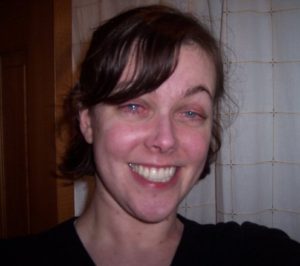
“What’s wrong?” he asked me.
“Nothing’s wrong,” I lied. “I’m fine, just watching a movie.”
“Alex,” he said. “I know you. And I know when something’s bothering you.”
And just like that, the floodgates opened.
“Who’s ever going to love me, Dad?” I choked out the words through tearless sobs, “I look in the mirror, and I don’t know that person. I’m hideous. Who would ever love someone with bright red eyes and a disfigured face? Who could ever love me with this face?”
That face was not my face.
In an instant my father was sitting beside me, wrapping his arms around my shuddering shoulders. I buried my damaged face against him and wept the few tears my eyes were still capable of making. At 21, there I was, curled up in my father’s arms, shaking like a little girl who had fallen down. In all honestly, that’s exactly what I was.
“You know that saying, ‘beauty is in the eye of the beholder’?” my father asked.
I pulled back and sniffed, “Yeah.”
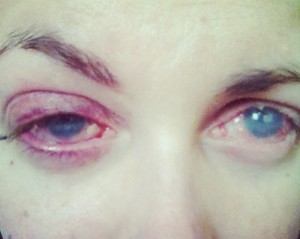
“Well, that’s the truth,” he told me. “You can’t look in the mirror and see yourself the way you see you. Mirrors are pieces of glass that distort the truth. Like funhouse mirrors—that’s not real. The real mirrors are the people who love you. Your mother and I, your grandparents, your aunts and uncles, your cousins, your friends. We are your mirrors. Look at yourself through our eyes. You might not look like the girls in the magazines, but you are beautiful.”
I have thought about that night often. The eight years since have been filled with two higher learning degrees, a boyfriend who broke my heart, two bouts of depression, sixteen eye surgeries, a painful falling out with one of my closest friends, and a great deal of breaking, healing, and self-discovery.
There’s an exercise I learned from one of my favorite yoga instructors. You close your eyes, put your hand on your heart, and breathe in thinking, “I am sublime,” then breathe out thinking, “I am worthy.”
The first few times I did this exercise, both in class and at home, it made me weep. Just thinking the words “I am worthy” made my heart ache and my body shudder in silent sobs. It hurt to think of my worth. Because somewhere along the way, I’d stopped believing I had any. Society tells women that their primary worth is derived from their physical appearance. I have always been a feminist and a woman proud to speak out against such nonsense, but that didn’t keep me from internalizing those norms.
For years, I had looked in the mirror and seen someone else’s disfigured face. I had separated myself from any concept of beauty and, therefore, worth in society. I had stopped seeing myself through the loving eyes of my friends and family and had fallen into the trap of seeing myself only through the eyes of the infamous societal “they” whose unspoken criticisms cut deeper than knives.
“That face is not my face,” I told myself.
“That worth is not my worth,” my soul heard.
 It has been a troublesome journey just to recognize this habit. Therapy, yoga, feeble attempts at meditation, medication—I’ve thrown the proverbial kitchen sink at my depression and am still working my way up the rickety, slippery ladder to feeling whole again. At some point along the way, though, I stopped flinching every time I saw myself in the mirror. I’ve brazenly started to wear makeup again and perfected the one-handed eye drop insertion that won’t smudge your eyeliner.
It has been a troublesome journey just to recognize this habit. Therapy, yoga, feeble attempts at meditation, medication—I’ve thrown the proverbial kitchen sink at my depression and am still working my way up the rickety, slippery ladder to feeling whole again. At some point along the way, though, I stopped flinching every time I saw myself in the mirror. I’ve brazenly started to wear makeup again and perfected the one-handed eye drop insertion that won’t smudge your eyeliner.
Today, when I see myself in pictures I recognize myself. I look in the mirror, and I know. That face, this beautiful face, is my face.
I am sublime. I am worthy. I am enough.
And I. Am. Beautiful.
Stevens-Johnson syndrome is described by the Mayo Clinic as “a rare and unpredictable reaction” that often begins as flu-like symptoms, creates “a red or purplish rash that spreads within hours or days,” and culminates in blisters on the skin and involvement of mucous membranes of the eyes, nose, mouth, and genitals. It can lead to mild or severe shedding of skin. It can lead to “extensive tissue damage” in the eyes and to the organs, as well as permanent scarring of the skin.
SJS is typically a reaction to a medication, such as antimicrobials like ciprofloxacin, doxycycline, or sulfasalazine, non-steroidal anti-inflammatory drugs (NSAIDS) like ibuprofen or naproxen, or anticonvulsant medications.[1] Once the reaction begins, there is no cure for SJS. Some treatments, however, have been shown to speed up the elimination of the offending drug and to lessen the effects of the reaction. There are 0.5–1.2 cases of TEN per million people each year, with a mortality rate of 20–30%. There are 1.2–6.0 cases of SJS per million people each year, with a 5-10% mortality rate.[2]
In my personal story, I touch on my continuing struggle with rheumatoid arthritis, an autoimmune disease that causes your immune system to attack healthy cells in your body. RA currently effects only 0.6% of the US population[3]; however, this accounts for only one of many autoimmune disorders, and that number is growing rapidly, especially in young women. Current costs for the treatment of RA range from $47,464 to $212,595 per patient per year.[4]
My personal care costs upwards of $3,000 per month, which I am only able to afford with the help of my health insurance and a program called RemiStart that covers some of the costs associated with the biologic agent Remicade. As I am a graduate student, I’m sure you can see where this is a major cause of stress in my life. In addition to cost, I spend 10 to 15 hours per week either in a doctor’s office, picking up prescriptions, or tending to my daily regimens. My body has to put up with five oral medications, and an intravenous drug (the aforementioned Remicade) that I must go into my doctor’s office every four weeks to have pumped into my veins. I have dealt with chronic depression, anxiety, and post-traumatic stress disorder. I read at one-third the rate of my peers, yet graduate school does not easily account for special needs such as these.
This is only my story, a single anecdote, an N of one among millions who face similar and even worse unseen effects of medical trauma on a daily basis. These unseen effects are the ones that we don’t often talk about. They’re the battles we fight alone. For the many people who have brusquely asked, “What’s wrong with your eye?” there are none who have noticed and asked about my other debilitating conditions.
There is a quote, attributed to various philosophers, that I have always loved: “Be kind, for everyone you meet is fighting a great battle.”
XO, A.C.
—
[1] Stocka-Labno et al. 2015. “Stevens–Johnson syndrome and toxic epidermal necrolysis in an academic hospital setting: a 5-year retrospective study.” Our Dermatology Online 7(4):381-384.
[2] Lalosevic et al. 2015. “Stevens–Johnson syndrome and toxic epidermal necrolysis: a 20-year single-center experience.” International Journal of Dermatology 54:978-984.
[3] Lee et al. 2017. “Comparing Healthcare Costs Associated with Oral and Subcutaneous Methotrexate or Biologic Therapy for Rheumatoid Arthritis in the United States.” American Health and Drug Benefits 10(1):42-48.
[4] Ibid.
